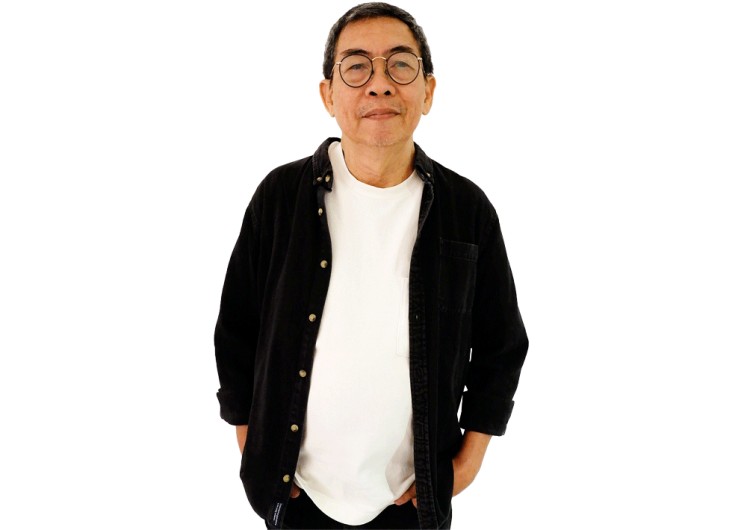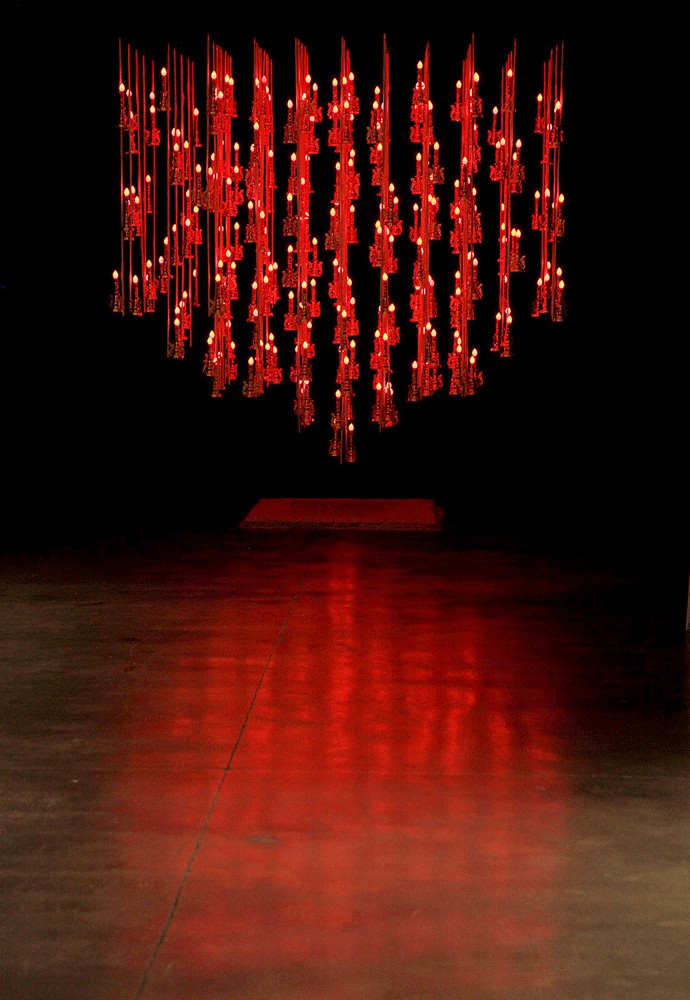Popular Reads
Top Results
Can't find what you're looking for?
View all search resultsPopular Reads
Top Results
Can't find what you're looking for?
View all search resultsArt in the eyes of FX Harsono
Change text size
Gift Premium Articles
to Anyone
A
ward-winning artist Franciscus Xaverius Harsono is not afraid to throw shade at human rights violators and artists whose works mean nothing to society.
At a recent art fair, he did not linger for long, as he simply looked around and left even though he was aware that many of the young participating artists graduated from prestigious art schools both at home and abroad.
For him, the displayed works were meaningless since they aimed to satisfy the market. “Their works are just artistically beautiful, unique and highly decorative. That’s it,” the 69-year-old said. “The way they understand visual art is on the surface only.”
Harsono said the contemporary art world had changed, with the quality of artwork not just determined by craftsmanship but also the idea and concept that the artist raises, what they mean to society and how deeply and thoroughly they are understood and expressed.
“Craftsmanship is no longer important in the making of an artwork,” said one of the founders of Gerakan Seni Rupa Baru (New Art Movement) in 1975, which significantly influenced the development of contemporary art in Indonesia.
The beauty in a work of art today, he said, was not just about a harmonious combination of colors. “An artwork is beautiful if it manages to fully deliver on the idea or concept the artist has,” said the laureate of the Prince Claus Award in 2014.
Harsono has made a name for himself as a leading and influential contemporary artist in Indonesia, winning various awards, including the prestigious Joseph Balestier Award for the Freedom of Art in January 2015.
He contributed his success to ideas, which he said could come not only from new things but also from history, which mattered since it was not just about what happened in the past, but also about the present and the future.
Born as Oh Hong Bun, Harsono is known for work that comes with strong social commentary and his critical voice against social and political oppression in the country, including discrimination against the Chinese-Indonesian community.
“How can we talk about the future if we know nothing about our past? If I do not know my past, I might not love this country and then leave it,” the versatile artist said, recalling discrimination he faced as a Chinese Indonesian.
One of his world-recognized seminal works is Writing in the Rain — a series of videos where the artist uses ink brush to write his name in Chinese characters on a glass wall as rain slowly washes the ink away.
FX Harsono (-/A.Kurniawan Ulung)The critically acclaimed videos, which represents authoritarian president Soeharto’s ban on anything related to Chinese identity, including name, was screened every midnight in January this year at Times Square in New York.
At his latest solo exhibition titled “Reminiscene” in Singapore’s Gillman Barracks, he displayed installations and a series of drawings about what happened when he was born in 1949 in his hometown of Blitar, East Java: the genocide of Indonesians of Chinese descent in Java from 1947 to 1949.
Harsono, whose father was a photographer, learned of the tragedy after accidentally finding his father’s photographs of the excavation of a mass Chinese graveyard full of genocide victims in Blitar.
One of the displayed installations in Singapore was The Light of Spirit. Replicating a gravesite with a chandelier of over 200 electric candles on top, it functioned as a monument to pay tribute to the victims of the massacre.
“The perpetrators of historical violence have a tendency to edit history. A great nation learns from the past. Acknowledging history might be painful, but it will help future generations to avoid from making the same mistake. Denying the past will allow history to repeat itself,” he explained.
“I am not angry, but I want you to know what happened. Nobody should forget it.”
The artist has exhibited his works at home and abroad but rarely holds solo exhibitions since it can take him months or even years of research to make a work of art.
He conducted research for nine years about the killing of Chinese-Indonesians from 1947 to 1949, explaining that, since 2009, he has been actively learning about the little known mass gravesite of the murdered Chinese.
Harsono said that in the making of artwork, research was a must to help artists fully understand the idea or topic they were trying to convey — something that he always points out when teaching.
In August, he completed his job as a mentor in SKS, a new contemporary art school project initiated by Erudio Indonesia. The four-month program was special for Harsono since most of its participants were professionals who had never studied visual arts formally in art schools. “I believe that everyone can be an artist,” he said.
SKS students also showcased their works in an exhibition titled “Titik Temu” (Meeting Point) at the National Gallery, Jakarta.
Although the program was short, Harsono said he was satisfied with their work because of the various issues they raised and their research.
The Light of Spirit by FX Harsono (Courtesy of FX Harsono/-)One of SKS participants was Adriani S. Sumantri, an anthropologist who has researched death philosophy and spirituality since 2017. She made an installation entitled Mati, Death. Another work, Sedo, which comprised batik cloth, a book, smells and audio, aimed to encourage people to learn about death to understand life.
In addition to the SKS project, Harsono runs an alternative art school called Exi(s)t, which he founded with graphic designer Hermawan Tanzil in 2011 as a response to the public and private art schools across the archipelago that he was disappointed with because of their use of market-oriented curriculum.
In the curriculum, research is largely ignored because what matters is craftsmanship, not idea. Therefore, in formal art schools, students are just trained to make artwork that can meet market demand instead of artwork that means something to society.
It is one of the reasons why he prefers to teach visual arts in alternative projects like Exi(s)t and SKS, because he formulated their curricula. His efforts have brought him a sense of accomplishment, as some of the project graduates have received recognition in the contemporary art scene at home and abroad.
“My student, Elia Nurvista, for example, is now undergoing a residency for a year in Berlin, Germany. She did research about how people in the deserted area of Gunung Kidul in Yogyakarta survive. What kinds of foods are they eating? Her artwork is about that,” Harsono said.













